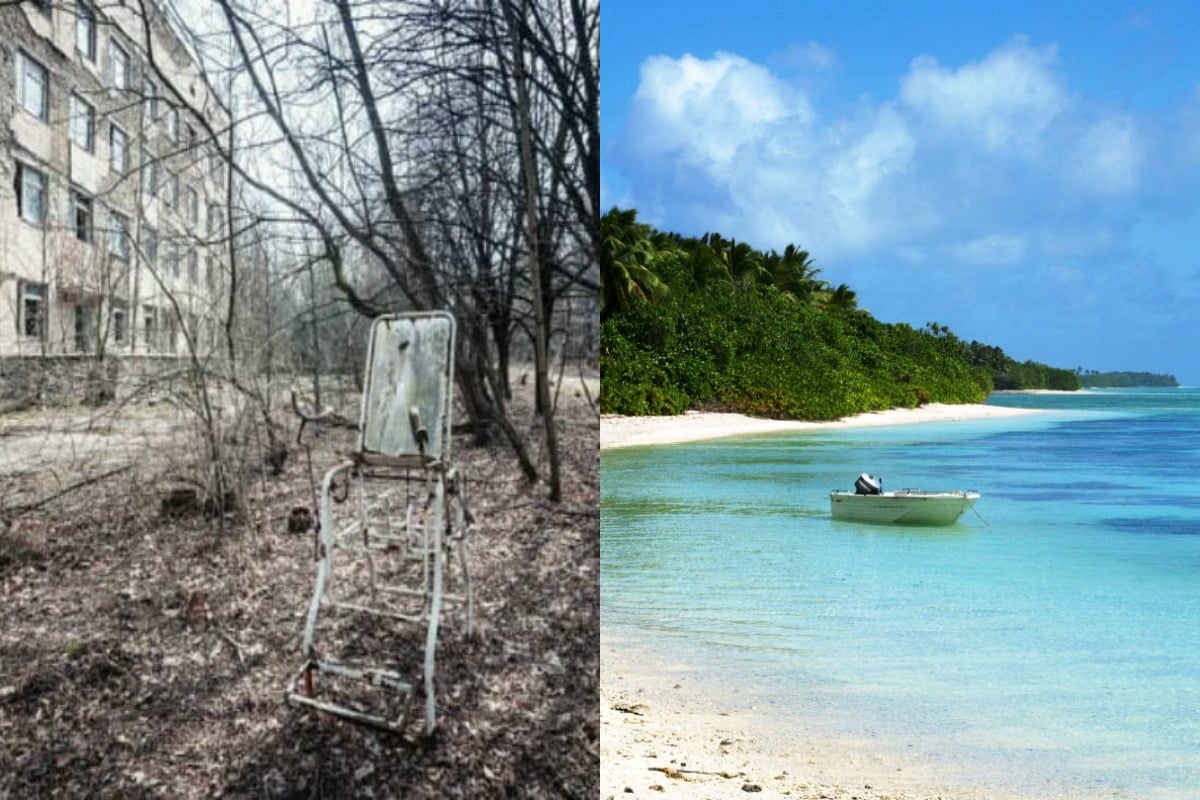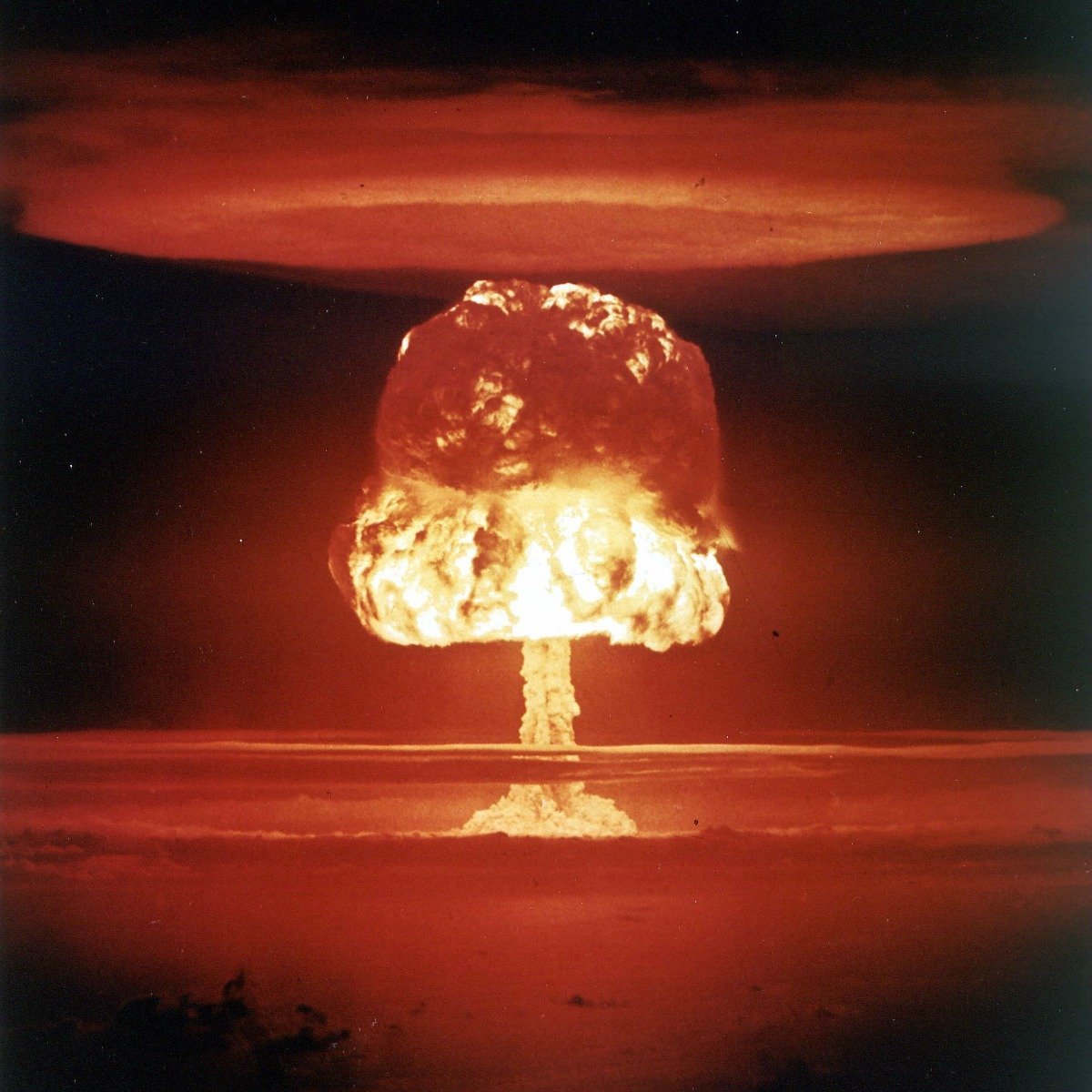
On sight, the Marshall Islands in the Pacific are just how you’d imagine any other tropical destination: Coral reefs and crystal clear blue lagoons, white sandy beaches leading to the warm Pacific waters, lush green vegetation and locals who enjoy typically ‘off-the-grid’ living.
What’s not visible to the naked eye is that the Marshall Islands, located halfway between Australia and Hawaii, is also home to radiation levels that in some parts measure higher than Chernobyl and Fukushima.
After World War II, many inhabitants of the island nation were relocated by the United States. Their land became the site of 67 nuclear tests by the US from 1946 to 1958, including testing of both the first and the largest hydrogen bombs.
The real story behind HBO’s Chernobyl. Post continues after podcast.
The US entombed nuclear waste under a concrete dome on the island of Runit, in the Enewetak Atoll, but the US Department of Energy believe it is leaching highly toxic waste into the ocean and the impact of the contamination is now becoming clearer.
Research from Columbia University published this week showed radiation levels are far higher than previously thought – in fact, on Bikini Atoll researchers found concentrations of particular radioactive material “were up to 15-1000 times higher than in samples from areas affected by the Chernobyl and Fukushima disasters”.
Bikini and Enewetak atolls were used as “ground zero” for the tests, and according to researchers “caused unprecedented environmental contamination and, for the indigenous peoples of the islands, long-term adverse health effects”.



Top Comments
The United States at great cost in blood and treasure liberated these people and others all across the Pacific from the brutal and barbaric occupation of the Imperial Japanese Army. It never ceases to amaze me how some people are ungrateful towards the US and the West, continually ignoring anything good it does for ideological reasons.
At the time of the tests we were still learning about nuclear weapons, increasing our understanding and how to make them safe. Although they will always be controversial, one cannot deny the absolute chilling effect they had on wars, providing reliable safety from attack for those who posses them.
Then the US can test them in their own backyard, not destroy the lands of other people, lands that they had no claim over because they belonged to other people. It never ceases to amaze me how little white people in the west regard the atrocities that their countries committed and the sovereignty of native people.
"Though banished from the island by the United States..." Yep, they just assumed ownership, even those these Islands had been inhabited for thousands of years. The sheer arrogance of the west still never fails to astound me. Plus, the people of the Pacific were totally screwed over by America in other ways, the US never provided anywhere close to adequate compensation to both the inhabitants of these Islands for the total destruction of their homes and the threat to their health. The men who employed by the US to carry out the tests have also been totally abandoned by their government.
Britain detonated nuclear bombs in Australia. That is much worse than some postage stamp island with a few natives on it.
"That is much worse than some postage stamp island with a few natives on it." obviously you know nothing about this topic and should read some of the Pacific Islanders opinions about this.